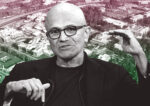Trending
No jobs mean no housing lift
South Florida’s unemployment rate remains entwined with its housing and commercial real estate markets, and still clocks in at more than twice 2006 levels.
A full housing recovery remains a complex proposition for the region, because the area’s economy has depended so much on construction and real estate that the collapse of those markets hits especially hard.
“It extends the downward cycle,” said William Hardin, director of real estate programs, associate professor and Knight-Ridder research fellow at Florida International University. “As long as people keep getting laid off, there will be more foreclosures.”
As South Florida’s real estate market tanked, the regional unemployment rate began to increase in 2007. Less work for builders and other construction workers meant fewer jobs, which pushed prices lower still. Now the unemployment rate is dragging the real estate market down even further. According to the Florida Department of Labor, Florida’s unemployment rate hasn’t been this high since 1976. South Florida has an average rate of 8.2 percent, with Monroe County at 6.2, Miami-Dade at 7.5, Broward at 8.3 and Palm Beach at 9.7. According to economagic.com, the average unemployment rate at the end of 2006 was only 3.4 percent throughout South Florida.
The skyrocketing unemployment rate looks like it will linger. Last month, eight major South Florida employers announced layoffs in a single week. The job cuts came from everywhere, from a major financial corporation to a department store. In Miami, JPMorgan Chase & Co. laid off 55 employees, Allstate Insurance Co. laid off 66, Macy’s laid off 60, DM Industries Ltd. laid off 206, Parsec Inc. laid off 142 and the Hillel Community Day School laid off 47. In Boca Raton, Freescale Semiconductor Inc. laid off 69 employees. In Coral Springs, First Data Global Customer Services laid off 31 employees. In Fort Lauderdale, Starwood Hotels & Resorts Worldwide laid off 176 employees.
“The psychology is the biggest thing, as big as losing the job, because people see this going on and think ‘that could be me next week,’ so they don’t want to make any big purchases just because they don’t want to lay awake at night thinking about it,” Hardin said.
The South Florida real estate boom, which peaked in 2006, was a kind of toxic stew, an artificial appreciation in the housing market where people got loans to buy houses and condos just to flip them for profits driven by momentum, not genuine value appreciation.
“Prices started dropping when we found that it was completely speculative [in] nature,” said Jack McCabe, CEO of McCabe Research & Consulting in Deerfield Beach, a company offering real estate research, analysis and consulting services. “With the downfall, we’ve seen a complete reversal. Unemployment is a definite factor in prices continuing to go down.”
Commercial real estate runs on a different cycle than residential, but its prospects are steadily worsening. Commercial project closures will become commonplace as companies continue to streamline operations.
“We’re going to have all these car dealers closing up, got a lot of office buildings empty so we still have problems ahead of us, and by the middle of next year it might be better but not a magnificent recovery,” McCabe said.
McCabe estimates that Florida’s unemployment rate will reach 10 or 11 percent by the end of the year, which means more foreclosures to come. McCabe points out that because we are so throttled by unemployment and foreclosures, even though sales are going up, prices are going to continue to fall. “People have been calling this the bottom for two years and sooner or later, they’re going to be right,” he said.




